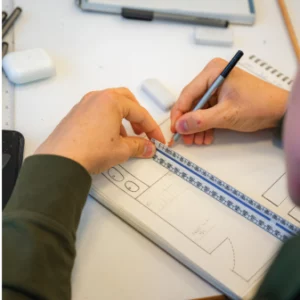Game design is an important piece of the puzzle when it comes to creating a successful video game. From coming up with ideas for the game to creating the mechanics, the game designer plays a key role in making sure that the game is enjoyable and appealing to players. There are many different types of game designers, each with its own specific role and areas of expertise.
Study Game Design at world-renowned locations amongst other creative individuals and expert tutors. Explore the Immerse Game Design programme now.
Level Designers specialize in creating the levels for the game. They work closely with the art team to ensure that each level looks great, as well as create paths for the players to follow throughout the game. This can involve designing puzzles, placing enemies, and creating shortcuts and secret areas.
Level designers also work to find the best balance between difficulty and challenge when it comes to each level. They want players to be challenged but not frustrated, making sure that there are enough tools and resources available to allow players to complete each stage.
Related Content: How Long Does it Take to Learn Coding?
System Designers create the rule sets and mechanics that drive the game. This includes things like character movement, health systems, inventory management, and combat systems. System designers are responsible for making sure that everything works together as an engaging whole, while also being easy to understand and use.
Narrative Designers work with writers and developers to construct an interesting story for the game. They pay attention to what will make players care about the characters and drive them towards their ultimate goal. Narrative designers create cutscenes and dialogues which feel natural and believable, as well as ensure that there is a clear structure for the story that makes sense for the player.
Gameplay Designers are responsible for designing the gameplay experience. This involves creating mechanics that are both intuitive and fun for players, while also making sure that they have enough depth to keep them engaged over time. Gameplay designers also experiment with different systems such as camera angles and controls to make sure they are comfortable to use.
Game directors are in charge of overseeing all of these different roles while also taking care of bigger-picture elements such as marketing, budgeting and reviewing changes in technology or trends that could affect the game. They make sure that all of these pieces come together into a cohesive whole, and direct their team towards success.
Game design is an incredibly complex process, with a number of different roles involved in making sure that a game turns out well and is enjoyable for players. Understanding the different types of game designers involved can help you better understand what goes into making a successful video game!
Join the Immerse Education 2024 Essay Competition
The Immerse Essay Competition is open for 2024! Follow the instructions to write and submit your best essay for a chance to be awarded a 100% scholarship.





















